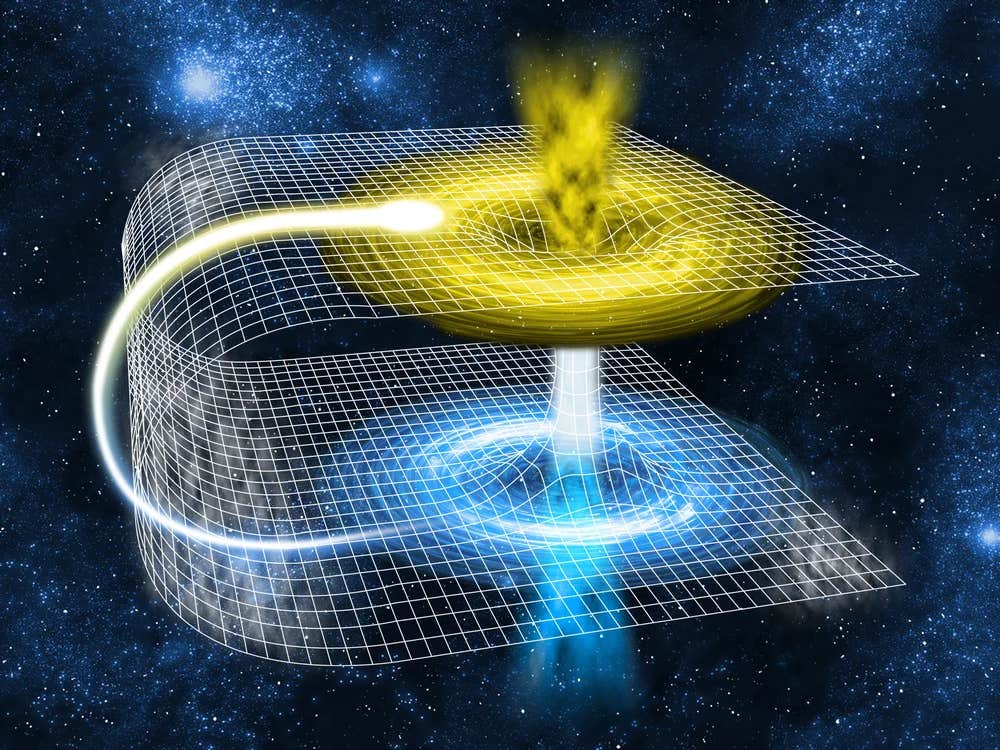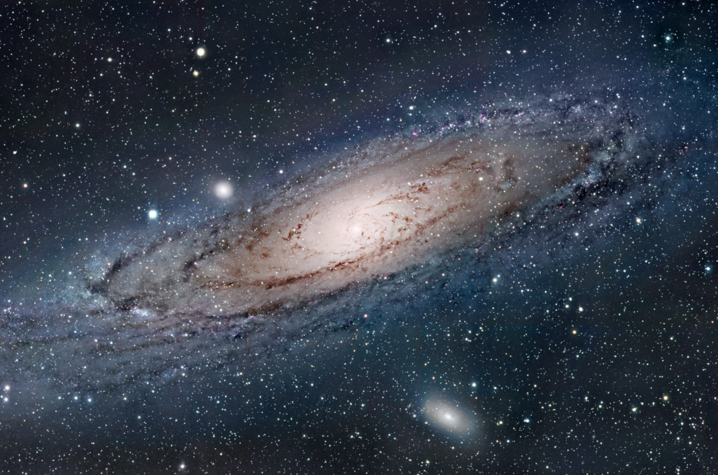Astrophysicists discover how wormholes could enable time travel
Scientists drawing inspiration from the world of law, have reportedly discovered a possible ‘loophole’ in the known laws of physics

Researchers drawing inspiration from the world of law, have reportedly discovered a possible ‘loophole’ in the known laws of physics. (CREDIT: Shutterstock)
Avid followers of science fiction may be all too familiar with the concept of time travel, wormholes, and teleportation. Now, it seems the boundaries between the realms of imagination and reality are blurring.
Renowned physicists Valeri P. Frolov and Andrei Zelnikov from the University of Alberta in Canada and Pavel Krtouš from Charles University in Prague, drawing inspiration from the world of law, have reportedly discovered a possible 'loophole' in the known laws of physics, which might potentially pave the way for time travel.
Both theoretical physicists and lawyers share a rather unique bond; they devote a significant amount of their time looking for inconsistencies and loopholes within their respective domains that could be manipulated to their advantage. "We can't necessarily get you out of a traffic ticket, but we might have just found a way to send you back in time to ensure you didn't speed in the first place," the researchers jokingly remark.
What lies at the center of this breakthrough discovery are wormholes, theoretical passages or shortcuts through spacetime, that are not universally recognized attributes of our cosmos. Despite their elusive nature, these phenomena have intrigued scientists for nearly a century, who hypothesize that the twisting and bending of spacetime, as prescribed by the theory of relativity, might allow for quantum ripples or even whole particles to break free from their locality.
Their research could open up possibilities previously relegated to the pages of science fiction. Imagine human-sized masses traversing light years to cross galaxies in the blink of an eye or moving through time as effortlessly as one would navigate their own kitchen.
Related Stories
While these scenarios may appear fantastical, they serve as crucial exercises for probing the complex, exotic side of spacetime behavior. These investigations could further our understanding of the intersection between quantum physics and Einstein's general theory of relativity, an area that still harbors many mysteries.
Wormholes, at their core, can be considered as peculiar shapes. As humans, we interact daily with single-dimensional lines, two-dimensional sketches, and three-dimensional objects, many of which can be molded, folded, or punctured. Physics, on the other hand, gives us the tools to explore these changes in ways that transcend our intuition.
Quantum effects on the smallest of scales provide some flexibility in distances and time, whereas, on a much larger scale, spacetime can contract and expand relative to gravity. This behavior is challenging to conceptualize without the assistance of complex equations. For instance, accumulating a considerable mass in one place (disregarding any charge it might have or its rotation), can cause spacetime to warp in a manner that creates two exterior surfaces. The conduit that connects these surfaces? A wormhole, naturally.
However, matter would not be able to traverse this mathematical construct. Yet, some theories suggest that entangled objects on either side of the wormhole could remain interconnected.
For several decades, researchers have sought scenarios, both plausible and theoretical, that could allow quantum effects and even whole particles to journey unscathed through these exotic shapes of spacetime.
The trio's proposal for a time warp involves a type of wormhole known as a ring wormhole, first postulated in 2016 by Gary Gibbons, a theoretical physicist from the University of Cambridge, and Mikhail Volkov from the University of Tours. Contrary to the spherical distortions of spacetime often associated with black holes, the ring wormhole model posits a connection between flat patches of the Universe or even separate universes.
By taking into account the interactions of electric and magnetic fields, referred to as duality rotations, and applying certain transformations, the formation of ring-shaped masses could lead to fascinating distortions in otherwise flat spacetime. This could give rise to a hole in the Universe that connects disparate locations.
The researchers tested this model by running it through various scenarios, such as the effect of another non-moving mass on the ring or what happens when the entry and exit rings exist in the same universe. The solutions they unearthed included a fascinating concept known as a closed timelike curve. This describes a scenario where an object or ray of light travels along a line, ultimately returning to the exact same point in both space and time.
Before we get carried away with dreams of paradoxical trips to the future and back, many hurdles need to be overcome. The late physicist Stephen Hawking certainly had his reservations. However, if the right kind of "cosmic lawyer" can be found, we may be able to appeal our sentence of a one-way trip into the future with some assistance from a massive pair of rings.
This groundbreaking research has been published on the preprint server arXiv and has been accepted for publication in Physical Review. The quest for understanding the universe and our place in it continues, and every new discovery brings us a step closer to unraveling the fabric of reality.
Note: Materials provided above by The Brighter Side of News. Content may be edited for style and length.
Like these kind of feel good stories? Get The Brighter Side of News' newsletter.



